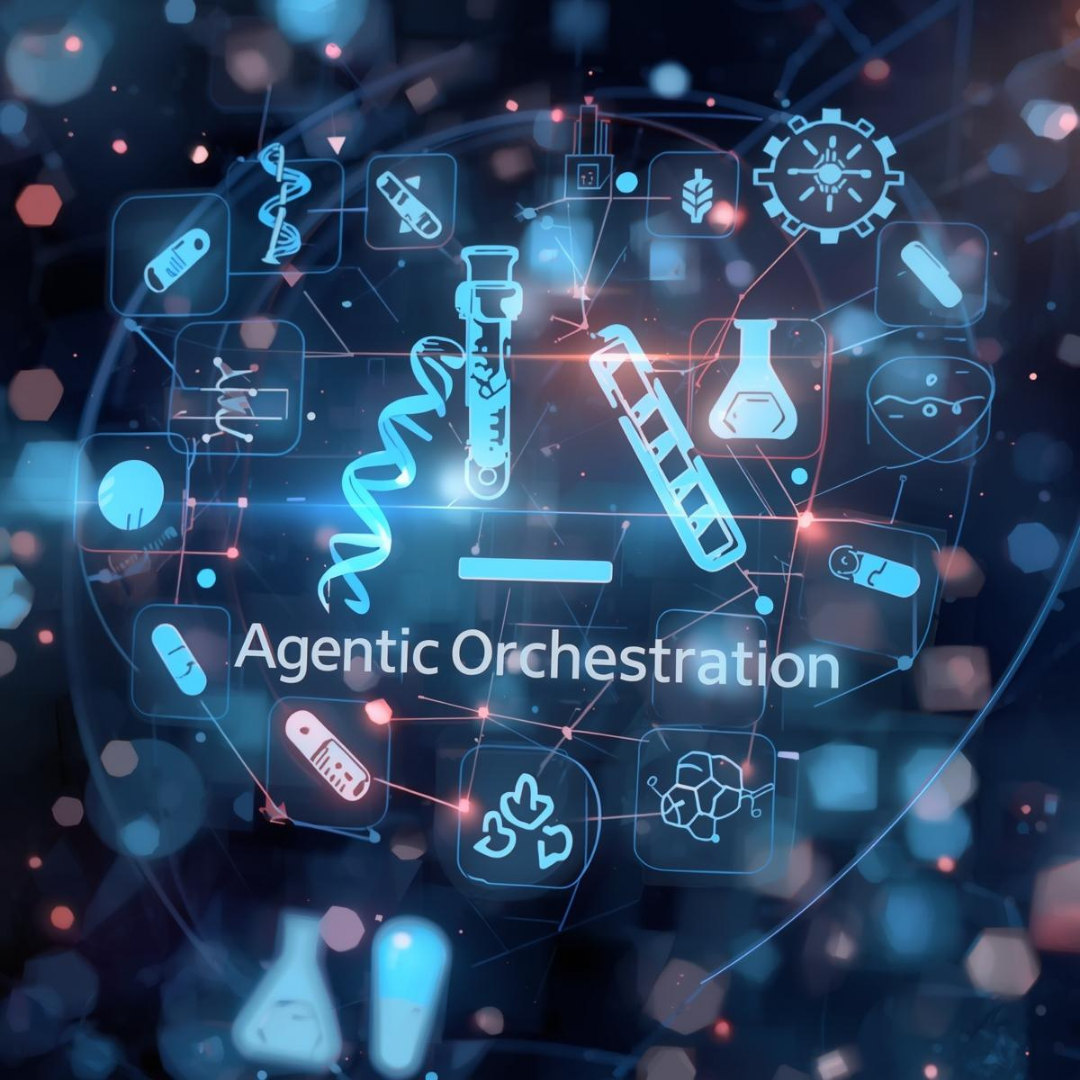Why Generic Chats Fail in Scientific R&D
In R&D, the answer rarely lies in one document. It is buried across ten thousand PDFs, methods sections, toxicology tables, supplementary figures, ELNs, conference abstracts, and internal study reports.
.png)
Most enterprises have already tried the obvious experiment. You connected a generic chat model, gave it access to a few shared folders, and asked real scientific questions. In the first week, the results looked promising. The model summarized a single report nicely. It drafted a protocol outline. It analyzed a provided dataset or table and produced a useful chart. For tasks where all relevant information sits in front of the model and is contained in one storage, the experience feels smooth. Nothing needs to be searched externally. The data is not fragmented. The model performs pattern recognition and text generation on a bounded input, and that is often enough.
Then the work shifted from polishing what is already known to finding what is not yet assembled. This is where pilots stalled. In R&D, the answer rarely lies in one document. It is buried across ten thousand PDFs, methods sections, toxicology tables, supplementary figures, ELNs, conference abstracts, and internal study reports.
Scientists do not ask the model to rephrase a single slide; they ask it to locate, compare, and prove facts across sources, with citations that withstand peer review and internal QA. For that, it is a different problem class. It does not reward fluent summaries. It rewards systems that retrieve and reason over prior knowledge with traceability.
.png)
The Four Structural Gaps in Generic AI
The crux of the problem lies in this split: within one file versus across many. Inside one file, generic chats are helpful. Across many, they break. Once your questions require the model to range across literature and private PDFs, four gaps consistently appear.
- First is the retrieval coverage gap. What matters is not whether the model can access your SharePoint or Google Drive. What matters is whether it can reliably find the right passages across thousands of documents and present the best ten or twenty in a small context window. In practice, simple connectors do not solve this. Anyone who has tried searching a shared drive full of scientific PDFs knows the top results are often irrelevant reviews, duplicates, or documents that match surface keywords but miss the signal in methods or tables. Large language models can only reason over what is in their window. If the wrong passages are retrieved, the answer will be narrow at best and misleading at worst. But, scientific information retrieval is not a generic keyword search. It requires full-text indexing, page-level anchoring, entity normalization, and diversity-aware ranking to ensure that the model sees the right evidence, not just the most popular or most recent.
- Second is the provenance gap. Scientific and regulatory workflows require traceability. It is not enough for a model to produce an eloquent paragraph. Stakeholders need to know where each claim came from, down to the page, sentence, figure, or table. They need to see conflicting evidence and understand why one source was weighed over another. Generic chats can sometimes include links, but they do not produce stable evidence chains. They do not consistently return page-anchored excerpts from full-text articles and internal PDFs. They rarely expose assumptions and limitations in a form that can be reviewed. In science, an answer without defensible provenance is an opinion. Opinions do not pass review boards, do not support filings, and do not survive long in discovery programs where lives and budgets are at stake.
- Third, the accuracy gap. This isn’t only about missing citations. It’s about factual correctness. When answers depend on evidence scattered across many papers and internal reports, ungrounded chats tend to overgeneralize or invent connective tissue. Accuracy improves when two things are true at once: the system retrieves the right full-text passages, and its reasoning is constrained by structured knowledge (ontologies/graphs). That combination reduces overconfident errors and surfaces conflicts instead of glossing over them.
- Fourth is the reproducibility and governance gap. R&D decisions must be repeatable. Teams need to rerun a study on a fixed corpus and get the same result, or at least understand why the results are diverged. That demands versioned corpora, governed research plans, run manifests, and audit artifacts that can be exported and inspected. A chat transcript does not meet this bar because the state of conversation drifts. Sources enter and exit prompts without a clear record. Without a governed runtime for retrieval and reasoning, you cannot certify how an answer was produced or guarantee it can be reproduced later.
The Three Common Misconceptions
Buyers often raise three counterarguments, and they are reasonable.
The first is, “We connected Google Drive or SharePoint.” Good. Connectors are table stakes, but they only expose files. They do not perform scientific full-text retrieval with ontology grounding or page-anchored citations. Without the retrieval layer, the model is still guessing which passages matter. You are not doing literature and report review. You are doing document opening. This is precisely why PubMed, a scientific Search engine, is better than a Google search and trusted by millions of scientists.
The second is, “We will build our own RAG.” Some teams should. If you take this route, recognize what you are signing up for. You will own OCR for scans and tables, chunking policy, embeddings, deduplication, retrieval evaluation, safety filters, monitoring, and audit. You will need to harden that pipeline across publishers, file formats, and internal report styles. You will need to prove it reduces hallucinations on your corpus, not on a public benchmark. That is not a prompt engineering task. It is a platform program with ongoing costs.
The third is, “Summaries are enough.” Summaries are helpful for orientation, drafting, and communication. They are not sufficient for decisions that must be defended. Without provenance, a summary cannot be reviewed, repeated, or trusted beyond the meeting where it is presented. Scientists and QA leaders know this intuitively. This is why pilot enthusiasm fades when outputs lack page anchors and evidence matrices.
What Science-Grade AI Must Do Differently
To meet scientific standards, what should a “science-grade AI” actually do?
- Start with full-text retrieval. Index PDFs end-to-end, including methods, figures, tables, and supplements. Return page-anchored passages, not just document-level hits.
- Add knowledge grounding so entities and relationships are normalized and context is preserved. Cytokine synonyms, target aliases, indication hierarchies, and safety signals should be resolved consistently.
- Knowledge graphs as grounding. A domain knowledge graph is the backbone for scientific accuracy. It unifies synonyms and identifiers, encodes directional relationships (target → indication, target → safety), and constrains reasoning to biologically coherent paths. With graphs in the loop, the system retrieves the right passages, aligns entities across papers, and resists drift. The result is fewer wrong turns, higher recall where it matters, and answers that stay consistent across studies.
- Layer on an agentic research workflow that plans the work, retrieves from the right sources, compares claims across studies, reasons over conflicts, verifies, and cites.
- Outputs must be evidence-first: an evidence matrix, an assumptions log, inline citations, limitations, and a provenance file you can store and audit.
- Finally, implement enterprise controls: data boundaries, deployment options, policy enforcement, and run-level reproducibility, so results can be defended months later.
Seen through this lens, it becomes clear why generic chats did well on the early pilot tasks and then hit a wall. Why? Because they excel at analysis when all the truth is already inside one file. They are not built to find, weigh, and prove facts scattered across a vast and messy scientific corpus that includes your own internal reports. Scientific R&D does not reward eloquence alone. It rewards evidence you can trace.
If your answers must be defended to peers, regulators, or patients, choose technology that treats retrieval, provenance, and reproducibility as first-class features. Use generic chats for drafting, summarizing, and contained analysis. Use a research engine when the work depends on distributed evidence and decisions you must stand behind.
Further reading

Get to know Causaly

What would you ask the team behind life sciences’ most advanced AI? Request a demo and get to know Causaly.
Request a demo.png)

%20(5).png)
.png)
.png)

%20(1).jpg)
%20no%20logo.jpg)

